There’s a rather fun exhibition on at the moment about the pre-television era of mass entertainment, the music halls and the people who they turned into later television stars.
It’s mainly a collection of display boards focusing on each of the area’s famous music halls, and some glass cases with leaflets and signs promoting the events.
From the very earliest days of entertainment in a pub, the music hall was to expand massively to venues that could often hold as much as 3,000 people — and with shows often twice a night, that’s an indication of how important the music hall was for society as a source of entertainment.
One of the advantages the music halls had over their posher opera houses was that as they emerged from pubs, they retained their drinking licenses, so people could take alcohol into the seats with them. Which could be a problem if the act was a bad one — in some halls the bottles carried by waiters would be chained to the tray and the orchestra pit would be protected by a grill.
The display boards tell stories of things being thrown you’d never expect – including dead animals.
The music hall era itself though was a short-lived period of time arriving just as enough people had just enough time and money for pleasure and technical advancements such as gas lighting made large venues possible, but before the radio and TV encouraged people to stay at home, which was probably a blessing to the actors who no longer had to dodge flying dead cats being thrown at them.
Many of the music halls converted into cinemas, but today very few of the buildings survive. In that sense, they are a lost architectural landmark for the streets of London, with their grand facades and garish signs luring people inside.
A lot of the display boards in the exhibition are dedicated to one music hall each and end mournfully with notes of what rather bland building now occupies the site, although Collins music hall survives, as a facade for a bookshop.
The rest of the space is given to the actors themselves, the people who often over very working-class backgrounds who would rise to be the superstars of their time. The people often slightly overlooked as being a bit tabloid and uncouth, so hardly going to appear in newspapers of the time.
Champagne Charlie, Vilikens and his Dinah, the singing Irishman, Burlington Burtie, and names that might be more familiar even today – Liberace, Max Bygraves, Bruce Forsyth.
Permeating the exhibition is the music – classic songs that are even today still vaguely familiar, and their crisp tones that so strongly defines the era is itself a result of technology. The early recording devices struggled with deeper vocal tones, so crisp high tones were easier to record.
It’s a delightful exhibition, just enough facts about the buildings to fill 20 minutes of so reading, and then the posters and ephemera — and throughout it all, the music playing in the background to transport you back to a time when each evening tens of thousands of Londoners would travel to the Music Hall.
The exhibition, Music Hall in Islington is open at the Islington Museum until 22nd October – entry is free.
It’s open Monday – Saturday: 10am to 5pm – closed on Wednesday and Sunday.


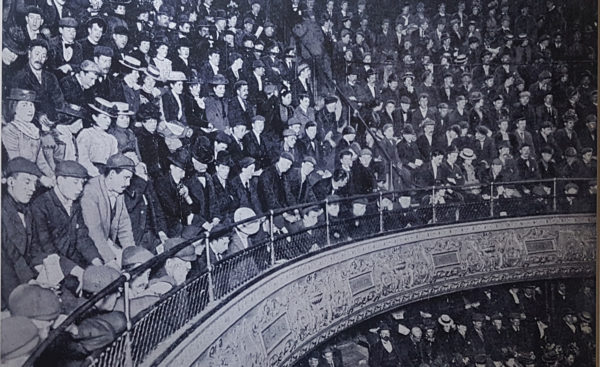
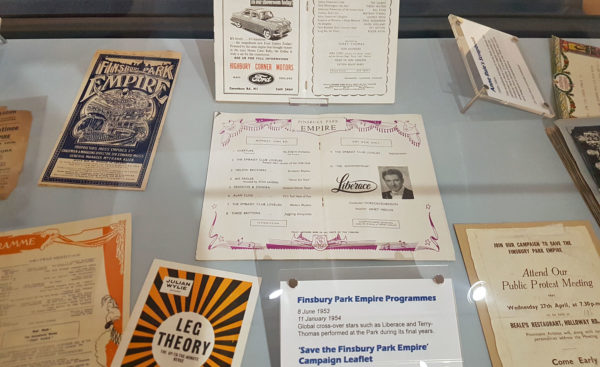
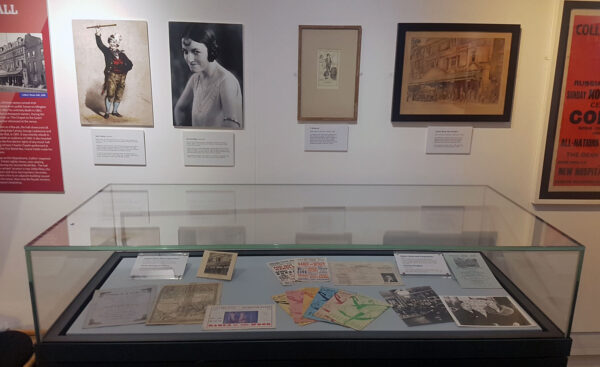
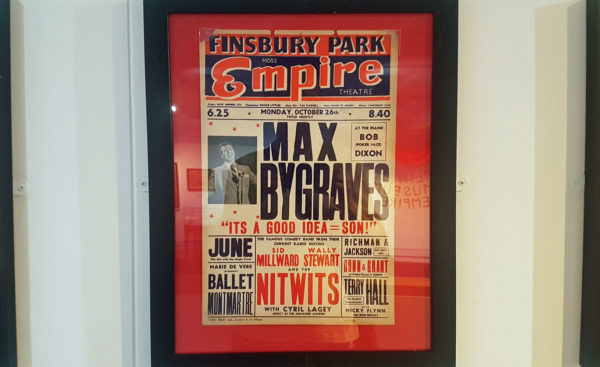
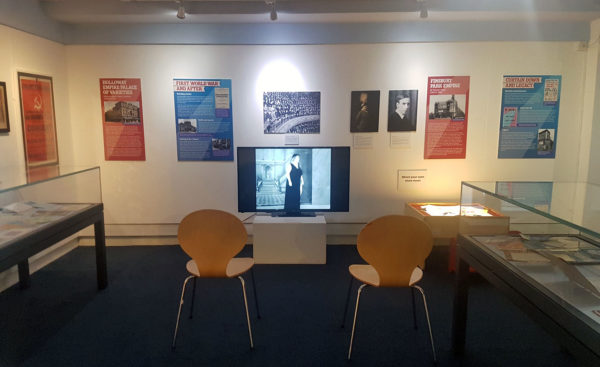






The Grand , Islington Angel became an ABC Cinema which I only seem to remember seeing The Greatest Show On Earth film at before it closed and was demolished in the 1960s .
However, living locally I and other children went into the building after it had closed to find the chandelier swinging where the audience once sat while the theatre had 3 upper balconies with the top level referred to as being ” Up in the gods ” . While backstage there were abandoned dressing rooms from its earlier music hall era.
One music hall that survived longer in Islington was The Collins Music Hall , Islington Green to which my parents went but that fell victim to a fire in the late 1950s .
There is the shell of a new theatre on the site of Collins, but sadly it was never finished and there are still cases ongoing about it
The shell can be viewed during the London Design Festival (14-22 Sep), there’s an installation called VOID taking place there.
Sadly, I didn’t hear about the Islington Museum ‘Music Hall exhibition’ in time to visit before it closed on October 22 2019.
I grew up in Isleworth, West London, and visits to the Chiswick Empire were a family treat.
Last headline performer I remember there was trumpeter Nat Gonella.
Sorry this is not about Islington or the Angel but it’s good to know that memories of the London music hall scene linger on. A long way fromtexting and computer games.
Am now signing up for your newsletter.